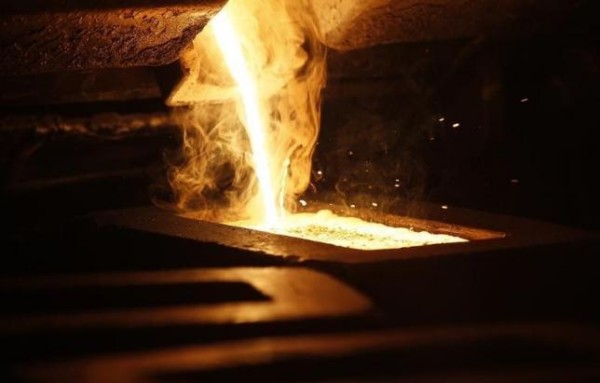PBS: Escaping Eritrea … [Read More...] about ካብ ውሽጢ ቤት ማእሰርታት ኤርትራ
For risk-wary gold miners, small is beautiful
TORONTO | |
Bigger isn’t better for the world’s gold miners, who are increasingly making “bite-sized” developments that carry less risk of budget disasters and fewer of the political and environmental disputes that have derailed mega-mines in recent years.
Newmont Mining (NEM.N) is a prime example of how companies are responding to bleak industry conditions by building mines on a smaller scale than in the past, with the price of gold down almost 40 percent from its peak in 2011 and banks avoiding the sector. The cautious approach will likely persist even if conditions improve, with miners increasingly teaming up on big, complex projects to share costs, expertise and risk, senior mining executives and industry watchers said.
“If there’s going to be something go wrong, you’d rather it go wrong after you’ve spent $1 billion than $3 billion or $4 billion,” said Goldcorp Inc (G.TO) Chief Executive Chuck Jeannes. Goldcorp, the world’s most valuable gold miner by market capitalization, owns stakes in a number of joint-ventured assets such as the Alumbrera gold mine in Argentina and the Pueblo Viejo gold mine in the Dominican Republic.

The price of gold has fallen as concerns about inflation receded and the U.S. dollar rose against most major currencies. Gold is often used as a hedge against inflation, as prices typically rise when the dollar weakens. Barrick Gold (ABX.TO), the world’s largest bullion producer, could be the poster child for problem-plagued mega-mines. Its Pascua Lama project in the Andes was mothballed in 2013, bogged down by environmental issues, labor unrest, political opposition and development costs that ballooned to $8.5 billion.
“A phased approach to developing large, complex capital projects makes a lot of sense,” said Barrick spokesman Andy Lloyd. “There is potential to mitigate development risks, reduce upfront capital requirements and expedite initial cash flows from the project, which could be used to fund future expansions.” Barrick has no new mine plans currently, as it sells assets to trim a $13 billion debt.
Last week, it announced a strategic tie-up with Zijin Mining (601899.SS), selling a stake in its Papua New Guinea mine as a first collaborative step with the Chinese miner. Newmont Mining, the world’s No. 2 gold producer, decided to start small with its recently-announced Long Canyon project in Nevada.
The first phase is a $250 million to $350 million development funded with cash flows and available cash, using existing staff. Payback is projected in just over four years. Rather than building all the infrastructure for future phases up front, this approach makes each successive phase carry and provide its own return-on-investment, said Newmont CEO Gary Goldberg. “From an investor standpoint, it’s a good thing because it minimizes the risk involved,” he said.
SWEET SPOT
Yamana Gold (YRI.TO) is building Cerro Moro in Argentina for $265 million over two and a half years. It will be Yamana’s smallest operation on a throughput basis, or the volume of ore processed each day. “It’s a sweet spot in terms of manageable capital expenditures over an extended period of time,” said CEO Peter Marrone. Last year, the average annual projected gold output from projects that just went into construction and entered production was 15 percent lower than five years earlier, according to SNL Financial data.
Last year there were also more small mining debt and equity issues, correlating to the size of mines being built. The average issue in 2014 was $128.1 million, Thomson Reuters data shows, while the average for the preceding seven years only fell below $160 million one other time. The “easy stuff” has already been discovered, said Sterne Agee analyst Michael Dudas, so some of the most interesting prospects are in areas with different rules and regulations.
“That makes it a lot more difficult to get the confidence level from the board and investors to take big swings,” he said. “I do think the industry will be a lot more collaborative as we move forward, because investors want risk-adjusted returns that require some thought and some rigor.” To be sure, not all mines can be built in phases and bigger projects will find fresh appeal when gold rebounds from the current $1,175 an ounce.
“The market is short-term focused,” said Jeannes at Goldcorp. “If the gold price were $1,800 an ounce and the equity markets were wide open . . . our investors would be questioning us if we weren’t going for the full, large, build-out.” But miners have learned from the past five years, said Joseph Foster, portfolio manager at Van Eck, Barrick’s biggest shareholder.
“I don’t think we’ll see the capital cost blowouts and the margin squeezes going forward that we have in the past,” Foster said. “They’ve learned a very hard lesson and I don’t think they’ll forget it.”
